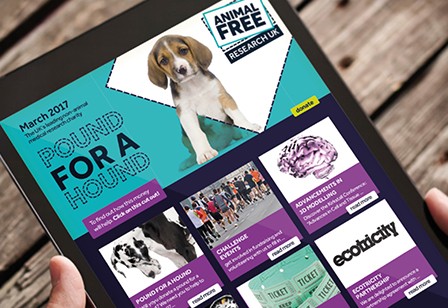Expanding a charity’s brand - Charities Management
As featured in Charities Management, by Max du Bois.
As charities increase their footprint they need to ensure their brand matches the expanded activities.
Turmoil is something the charity sector is learning to adapt to and even adopt as many charities seek to merge, grow, and develop new projects and new fundraising tools. It does, however, raise the pithy question of how do we present our services and the things we do in a coherent and clear way. This question, if left unanswered, will mean that as portfolios grow, there is a risk they either become barren or a tangled mess.
If we were to pick one sector within the charity mix where this holds particularly true, and we are spoiled for choice, this would be the mental health sector. Without doubt this is one of the most complex to manage. Competitors abound, both at scale and with niche specialisms, creating a complex web of identities all vying for attention.
Ideal context
It comes as no surprise therefore that mental health support charity Richmond Fellowship was one of the first to see this was an ideal context in which to flip the model on its head and turn it into an opportunity.
The charity's aim was visionary. It opted to bring together like-minded charities in a bid to change how the UK treats mental health. It believed that by joining forces it could build a national mental health and substance abuse services group large enough to make its vision happen.
One of the biggest challenges, however, was representing the members' collective ambition. Each partner charity had its own rich history of success, as well as its own unique look and message. They needed a brand that took each partner’s distinctive skills or regional and national reputations and combined them to break new ground in "making recovery a reality". That brand now is Recovery Focus.
We need only look at the commercial sector to see how well this can work. Take Virgin which, like Recovery Focus, centres its proposition around creating a link brand with each partner which still retains its own distinctive, but clearly linked, identity.
Key to remember is there is no one size fits all formula. Those who attempt to apply a blanket style identity end up with a bland, un-engaging brand that neither appeals nor differentiates, resulting in individual services under-selling themselves.
Conversely, those charities which have separate and unlinked brands that focus on each service or product will create silos that hide the collective breadth and depth of what the charity does. In so doing they will be squandering a valuable commercial asset that could help establish the credibility of new services and encourage cross usage and sales.
Yet the solution is relatively simple. Charities need to define what they have got that really appeals, both on an emotional and a rational level, to their audiences and make up any shortfall to each and every audience. In other words they need to ask "how can we make what we do relevant and appealing to all our audiences?".
Volunteering charity CSV asked itself this question when it felt its core brand was starving the charity of meaning and visibility. Now known as Volunteering Matters, the new focus resides in the charity's belief in the power of volunteering's ability to inspire and transform lives. The charity lives up to its brand promise of leading the UK in volunteering policy and practice. Its services are simply, and effectively, signposted and equally appealing across all platforms. The charity equivalent of Apple.
Standalone brand
Guide Dogs too posed this question when they brought on board National Blind Children’s Society. It recognised that to flourish it needed a standalone brand, to focus on the increased portfolio of services it offered. When analysing how to increase its relevance to wider audiences, it found that National Blind Children’s Society would become perceptually obscured under the Guide Dogs brand, adding little to the brand and damaging its ability to reach out to key audiences and to fundraise.
In rebranding to Blind Children UK it appealed strongly to the target audiences, became more firmly linked as part of the Guide Dogs family, and helped expand Guide Dogs away from "dogs" into broader mobility.
HSBC and First Direct reflect a similar brand ethos in the commercial sector.
Building larger entities without losing the value of each partner in the ensuing chaos is a juggling act charities are increasing going to have to learn to manage if they are to survive and remain relevant.
Striking a balance between supporting goals both at an individual and organisation level to provide clarity and relevance to all audiences requires a clear brand hierarchy to capture the group’s key differentiator.
So what are the key branding elements charities need to look for as they expand and manage their portfolios?
For a start the core brand and all its activities have to leverage each other. This means identifying each activity’s specific role and raison d’être.
There need to be equal parts of give and take. The core brand must give and gain from the activities.
Ensuring that the goals of each activity are reflected in the core brand and these are supported at both the individual level and the corporate level is key.
The core brand must provide clarity and relevance to all audiences. It should also promote logic and synergy as well as a sense of order, purpose and direction to the charity.
The charity sector is certainly undergoing challenges, yet there are enormous opportunities too to rethink the purpose of charities and reshape their original offering.
Taking time
Taking the time to carve out a balanced and powerful identity will have a transformational effect on the way new style charities are perceived both internally and externally. Key is to ensure their portfolio of brands does not exceed the sum of its parts, something that requires coherence to rule over chaos.






